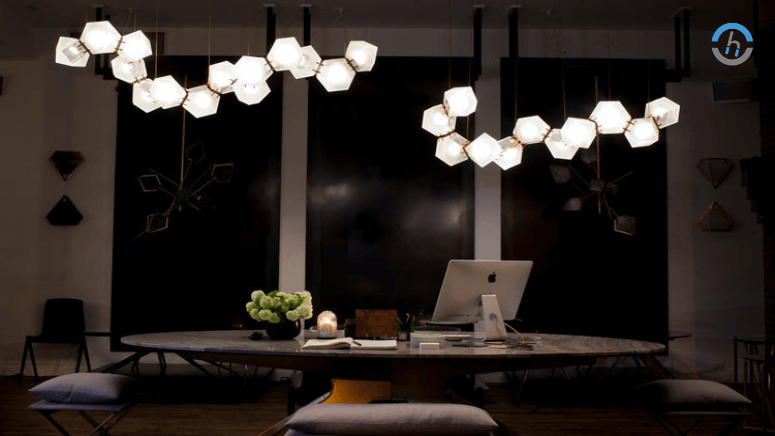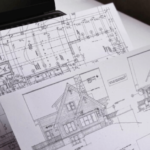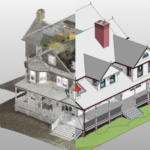The world of architecture and construction is very competitive, and keeping up with the latest technological developments is not an option but a must. Among the many cutting-edge software applications shaking up the sector, Autodesk’s Revit stands out for its powerful Building Information Modeling (BIM) functionality, especially in family creation.
Revit families are the DNA of the Revit model, a robust and flexible way to represent real-world objects that can utilized in a BIM project with dynamic data and functional parameters. A good understanding of the technicalities of Revit family creation in the architecture or construction business can take your projects to the next level of precision, uniformity, and efficiency.
What Is A Revit Family?
The most vital feature of a BIM tool is the family, which is essentially a collection of elements or types characterized by uniform properties. This uniformity enables information to shared and exchanged within the BIM model.
The families of the project elements involve inheriting the characteristics of object patterns or blocks, which can exploited to create and administer the elements easily.
Developing your own Revit families is like forming unique components that fit your project requirements and address the needs and project planning. It may be standard things like windows and doors or highly custom elements like stair support or light fittings.
Understanding Revit Families
The modular system and running simulation are all components of the Revit family that play a big part in the architect’s grand planning. They not only guarantee unlimited data storage and avoid inconsistencies between different projects but are also resourceful, as each element of the BIM model can be productive, hold important information, and react to changes within the model.
Revit families come in different forms, each serving a unique purpose: Revit families come in various forms, each serving a special purpose:
System Families
The structure families are pre-defined Revit standard families, which exist in the preliminary design template files and are used for developing the structure of a building. Among the ways are in walls, floors, ceilings, and roofs, where each wall has its own set of characteristics and constraints.
Component Families
The description “component families” can define a set of objects that can be edited and duplicated within the project but cannot create their entities. Items in this category include furniture, fixtures, and other equipment.
In-Place Family
Standalone entity families differ from the in-place families as the latter are to be implemented as a part of the model. On the other hand, the former are separate entities.
Nested Families
The nested families are the families that are nested within the model of other families. They possess a high level of detail and visual complexity as well.
What is the Difference between Revit Family and BIM Objects
The Revit Family takes the leading position in the BIM niche, where the two concepts are sometimes perceived as synonymous, though they possess their specific peculiarities. Although all the Revit families are the BIM objects, all the BIM objects are the Revit families. BIM objects are categorized into two main types: Revit families and 3D models with compatible BIM file formats like IFC, SKP, etc.
Unlike 3D models, which are too abstract to represent the data in sufficient detail, Revit families gain their crucial value by being the only party capable of storing all relevant data, including materials, cost, and manufacturer information.
Creating Revit Families
Creating a new Revit family can either as straightforward or as complex as the needs may be about the level of detail and interactivity being input. Although it does come with the initial effort of picking up, in the end, perfection is likely to be achieved when mastering the Revit family.
Here’s a high-level guide on how to create a Revit family:
Define Your Object: Before opening Revit, you must have a compelling concept of the object you wish to create. Knowing how the item should work in the real world, the manufacturer’s details and the item’s location for placement are among the factors you need to consider.
Start a New Family: Open Revit and choose the appropriate object category for the item to be incorporated into it ( lighting fixture, furniture, etc.).
Build the Object: To design the three-dimensional object, apply the software’s tools for drafting and modeling forms.
Add Parameters: Construct the object’s dimensions, material properties, and other parameters to make it mutable and adaptive.
Include Constraints: When pulled, create anchor constraints on the object’s geometry to guarantee its predictability and uniformity.
The Methods for Creating Revit Families in the Best Ways
You can make or break the BIM experience for yourself and a project you are working on with your team if you craft Revit families efficiently and effectively. Consider the following to optimize your Revit family creation process: Consider the next to optimize your Revit family creation process:
Consistency is Key: Make sure that using the same damn terminology, type catalogs, or properties for each family are uniform.
Keep It Flexible: Consider adopting a broader perspective as you design your families for a prosperous future. It must characterized by straightforwardness and easy implementation to allow for possible alterations during the implementation of the project.
Make It Scalable: Offering the option of scaling up or down in a particular family creates the possibility of accomplishing something that should be implemented. Mass-scale families will decrease the endless varieties of similar family types.
Leverage Formulas and Constraints: Apply formulas to correlate between other indicates in the family for a sense of community scale and arrangement.
Benefits of Revit Families
Investing time and money in creating and conducting Revit families brings many benefits aimed at improving the quality and efficiency of any design and construction work.
Streamlining Design Processes
Having a well-structured catalog of Revit families will make your design process come together seamlessly, from concept to completion. The family of standardized elements is easy to use and can modified and replaced without altering the project components, saving precious time.
Strengthening project collaboration and coordination is the key to it.
The Revit library ensures one language for all project team members. When used properly, such tools function as the sole point of reference for all the design disciplines and the project phase. They promote collaboration and can use across all departments in a project.
Where Can I Find Resources For Revit Families?
While creating your own Revit families is ideal for customization, there are times when finding existing resources can save time and effort. Fortunately, there are several online resources for ready-to-use Revit families:
NBS BIM Library: A comprehensive selection of BIM objects and their associated data.
Bimsmith Market: A platform for architects and designers to discover and download BIM content for specific project needs.
Cadforum: A vast online community where users share and discuss BIM content.
Why Choose Chudasama Outsourcing for Revit Families Creation Services
Revit Families creation services by Chudasama Outsourcing offer top-notch quality and expertise for your projects. Gain a competitive edge with our professional services tailored to your needs. Contact us today to elevate your designs!
Custom Revit Families for Specific Projects
Developing specific Revit families for particular projects is a great way to improve the detail and exactness of your projects by a large margin. By fine-tuning families to the requirements of the project, architects and designers guarantee both the convincing visual look and the high precision of the given design. This degree of personalization then allows for greater understanding of these specific aspects: of material requirements, cost estimations and overall project feasibility.
Expertise in Revit Family Creation
The Revit family generation team at Chudasama Outsourcing consists of competent members with lots of experience. With the deployment of our skills, we can provide tailored solutions that perfectly match your specific issues. We are very careful when creating the Revit families, so that the size of the file becomes smaller and that way the whole BIM processes become more efficient and faster.
Achieve Unmatched Quality and Detail
Every project is unique and carries its own obstacles, as well as specificities. Chudasama Outsourcing’s Revit families creation service promises industrial excellent quality and details in your modeling. Our custom families of Revit that are make with the skill of an artist will be true to the real world objects and systems to bring your designs to a higher level.
Conclusion
Revit Families creation is a standalone art and science within the BIM domain. Proficiency in Revit families brings about faster, more sophisticated, and more pronounced architectural projects. With the trend towards digitization and BIM within the industry, the ability to recognize and utilize Revit families will a skill set that architects and construction professionals cannot afford to underestimate.
While this guide is just the beginning, dive down the rabbit hole of Revit family creation, see how you can benefit your projects, and watch your workflow improve.





